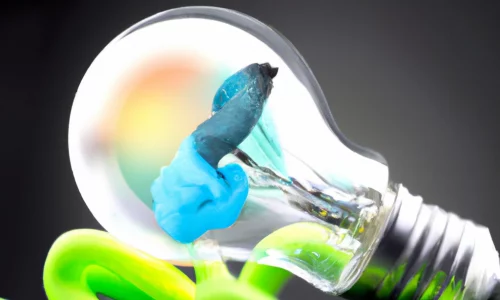7 Future Medical Technology Inventions That Will Change Medicine Forever
- James Wilson
- 0 Comments

Lost an arm? No problem. If there are constants in this world, it’s injury, illness, and death. Some injuries you can simply walk off and others will stop you from walking ever again. Some days we get a cold, and other days it’s terminal cancer. If there’s one motivator apart from dreams, it’s death itself.
But soon enough, even death will die. Biotechnologists, medical researchers, and scientists all over the world have been trying to figure out means to end illness, injury, and death forever. Let’s take a look at what the future might hold for medicine.
Advanced Prosthetics

Although losing limbs isn’t life-ending, the loss does hamper movement and make mobility difficult. Whether lost due to an accident, combat or congenitally, limb loss forces people to adapt to different mobility schemes. But perhaps this doesn’t have to be the case. Roboticists and medical engineers are currently developing prosthetic limbs that can someday accurately imitate limbs. And these prosthetics aren’t just limited to limbs either. From bionic eyes to electronic ear-drugs, each and everybody part can have a prosthetic analog.
And potentially, these prosthetic analogs might just be better than the original! Imagine a replacement hand also having interchangeable folding tools that are easy to access. Struggle to see in the dark? No problem, just switch to the infrared vision setting on your bionic eyes! Who knows — people might just be turning prosthetics into upgrades instead of replacements!

Now prosthetics as upgrades don’t exist on the market just yet. However, science fiction writers and video game developers have explored worlds where prosthetics have become commonplace. Interested in playing an action video game about a future world exploring the conflicts brought about by prosthetics? Play Deus Ex: Man Kind Divided.

Some diseases and injuries require full organ replacement. However — organ replacement is difficult. Finding the donor itself is already difficult — as there is a worldwide shortage of organ donors. Doctors have to make the difficult decision of deciding which patients get priority, and which don’t.
Hopefully, doctors won’t have to ever find themselves in those dilemmas again. Why rely on donors as a source for organs when you can manufacture them instead? Developmental biologists have been trying to grow human organs in their laboratories. Current theories and trials are leaning towards gene editing pigs and similar animals to act as host bodies for these manufactured organs. However, due to ethics concerns — it might take a while before artificial organs hit the market.

Hopefully, artificially grown organs come in soon. Due to the scarcity of organs out there for organ transplants, some people have turned it into a nefarious business. All over the world, there are crime rings dedicated to illegally harvesting, and selling organs on the black market. If you’re interested to see the grim reality of it — read Scott Carney’s “The Red Market: On the Trail of the World’s Organ Brokers, Bone Thieves, Blood Farmers, and Child Traffickers”. It’s an excellent book — but be warned, as this book is filled with graphic and gruesome details.
Gene Therapy

Genetic diseases pose a major roadblock for the medical sciences. Surgeries and medicine can do very little to fix any problems brought upon by genetic diseases. They are present from birth and can do a lot more than just physical changes. Diseases such as Amyotrophic Lateral Sclerosis (ALS), the same disease that afflicted Stephen Hawking, cannot be cured by any form of medicine or surgery.
So how do we solve genetic diseases? The scientist’s answer: fix the gene. Dubbed “Gene Therapy”, this new medical practice aims to surgically change the genes of your body through vectors such as viruses. The proposed workflow for gene therapy would simply involve diagnosis, getting a good sample of your genetics, editing out any undesirable diseases, and afterward reinserting it back into your body. Gene therapy might just end up replacing many of the conventional medicine and drugs we used today!

If you’re interested in learning more about genetics, take a look at A Brief History of Everyone Who Ever Lived: The Stories in Our Genes. It’s a wonderful book that takes a look at the origins of our traits — including damned lactose intolerance.
Robot Surgeons

Surgery is one of the most difficult professions out there. It can sometimes take up to 16 years before an aspiring medical student can call themselves a surgeon. And even with the 16 years of training, doctors are not immune to mistakes. They are human after all — they get exhausted, sick, tired, and are subject to biases and incorrect judgments.
Fortunately for us, engineers have been hard at work at developing surgery robots. Just imagine all the advantages of robotic surgeons — robots don’t tire, don’t have biases, are easy to replicate, and only require regular maintenance. Of course, robot surgeons won’t be removing all surgeons. Surgeons have the edge of human creativity — something that roboticists (for now anyway) can’t program into robots.

Building the machine parts of a robot is easy, but programming the robot is another thing entirely. If you’d like to get started on learning how to program medical robots, you better learn Python. Try and take a look at Udemy’s Online Course on Python programming! You’ll be able to learn at your own pace, from the comfort of your home, and at a cheaper price than enrolling at your local college or university!

Alright, so you know how we were talking about robot surgeons? Now imagine them much much smaller, around the size of organelles. Due to their size and mobility, nanorobots can solve many diseases and ailments that would be difficult with traditional surgery. Need to clear out a blood clot? No problem — the nanobots will simply travel through blood vessels to the clot, and destroy the clot with no invasive surgery needed. Need to deliver drugs to a specific tissue or organ? That’ll be easy — just inject nanobots with the specific drug and it’ll be off to administer it quickly and efficiently.
Currently, researchers are finding difficulty in developing robots at such a tiny scale. Proposed solutions range from programming cells to even finding a way to develop shrink ways. But soon, very soon, these might be used in hospitals near you!
If you’re interested in turning nanorobotics into a profession, I suggest you get started with the book Nanorobotics: Current Approaches and Techniques. It’ll highlight all the basics you need to know and give you an overview of where current nanorobot research is taking us now.
Mind Uploading
You would be lying if you told me that death isn’t scary. Because let’s be honest — we don’t know what happens beyond. For centuries, people have been striving to fight off and escape the clutches of the Grim Reaper. Across histories, you can find several claims for secrets to immortality, ranging from elixirs of life to the fountain of youth. And time and time again, all of these claims have been proven to be all fakes.

Mind uploading is just that. Mind uploading is a theorized process of scanning your consciousness, your person, and uploading it to a computer. From there, you have the option of inhabiting the cyberworld or transferring your consciousness to a new body.
Of course, immortality presents a whole swathe of new questions and problems. Is there a point of having kids anymore? Will life eventually get boring? Will people fight for immortality? If you’re looking to explore a potential future where Mind Uploading is normalized, take a look at Altered Carbon. Altered Carbon is a 10-episode TV series that explores a fictional future where Mind uploading is the norm.
Personalized Medication

Medication has been an everyday part of our lives since the early 20th century. We medicate for bacterial infections and diseases, for mental illnesses, and we even use medication to help us sleep. Some might even argue we drink medication as often as we do our coffee.
Of course, medication isn’t perfect. Although medication is designed to be for all — that’s not always the case. Some people have allergies, and some medication is made ineffective due to congenital ailments or different physiology. Even pills, for instance, can be a struggle for those who have difficulty swallowing, or for kids who just don’t like pills.
So imagine, rather than buying your medication at the local pharmacy you could just produce it at home? Imagine 3D printing personal medication, tailored to suit your ailments and other conditions? That’s right — 3D printed personalized medication is coming to your home soon! 3D printers have the potential to create medication with the proper doses and mixes. Why settle for just store-bought medicine, when personalized medication can be customized to suit your needs!

If you’re interested in getting to know 3D printing technology — fortunately for you there’s plenty of 3D printers now available on the market. If you’d like to get started, I highly suggest the Comgrow Creality Ender 3 Pro 3D Printer. It might take a little practice to use, but it’s one of the best 3D printers out there for beginners!






